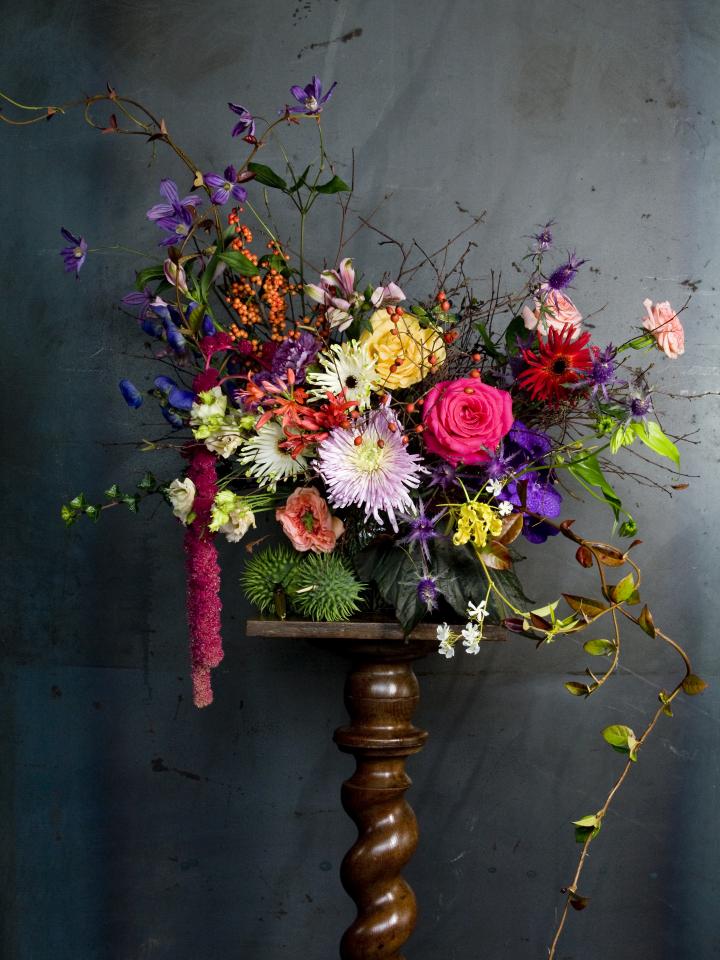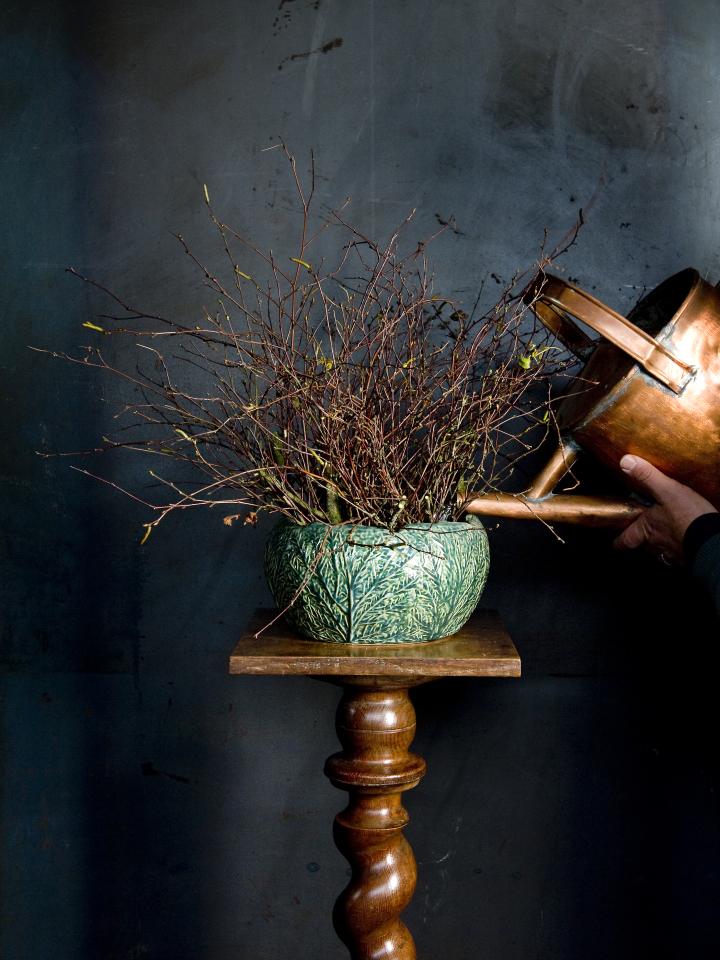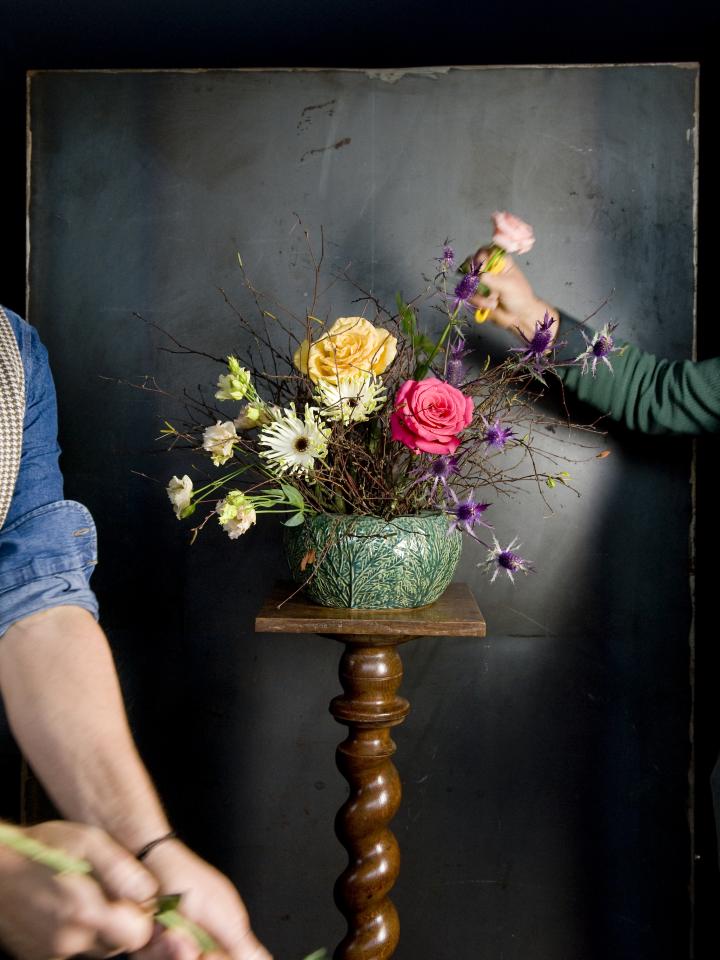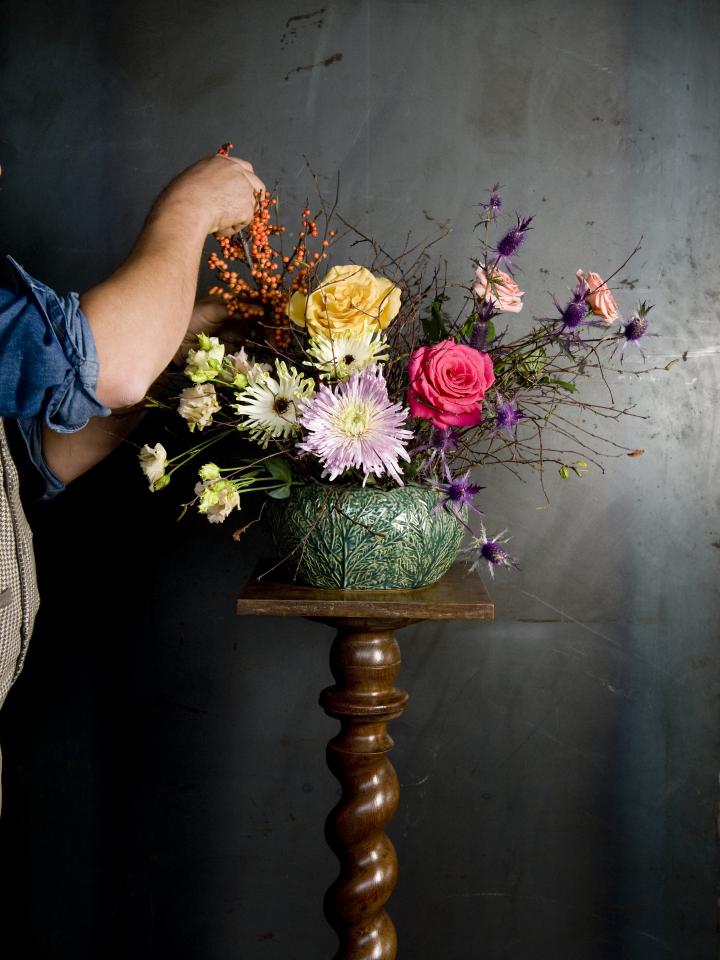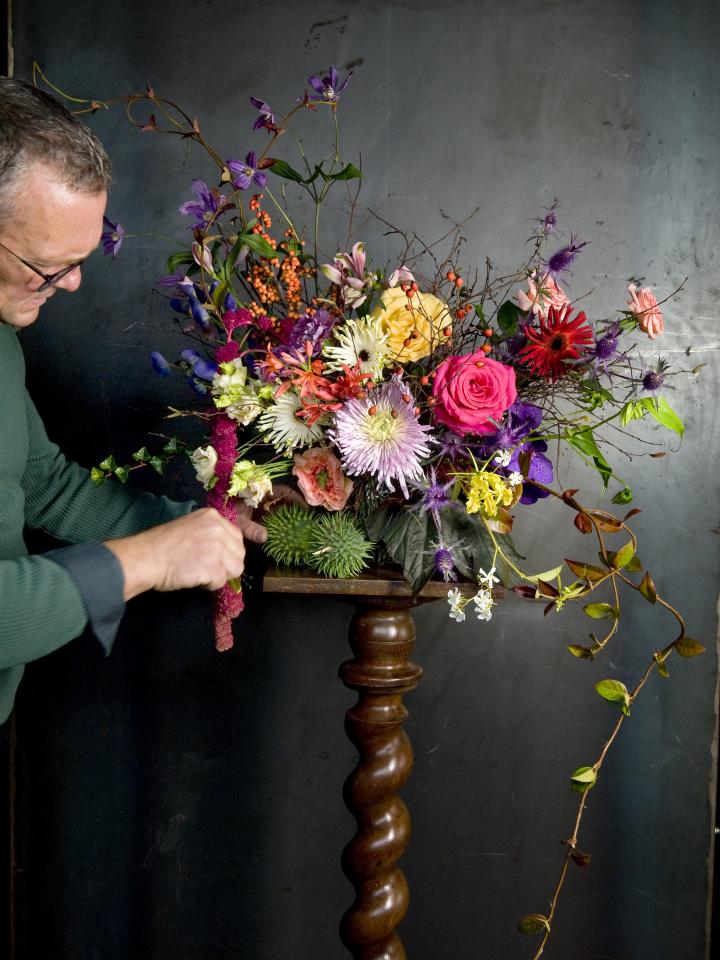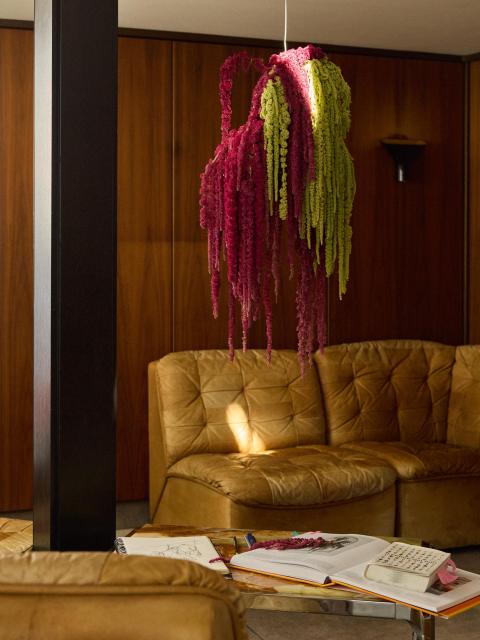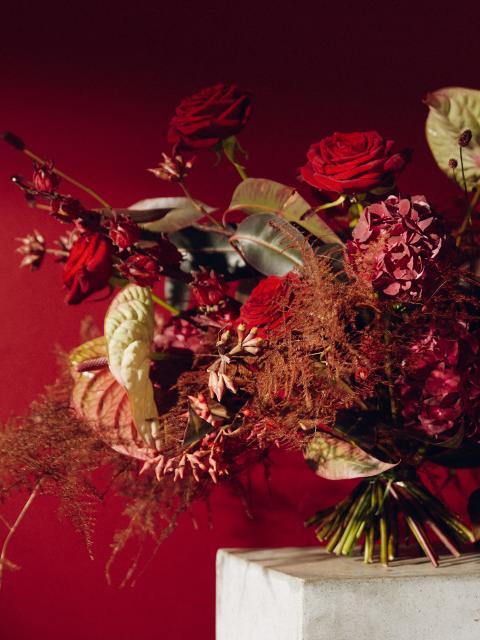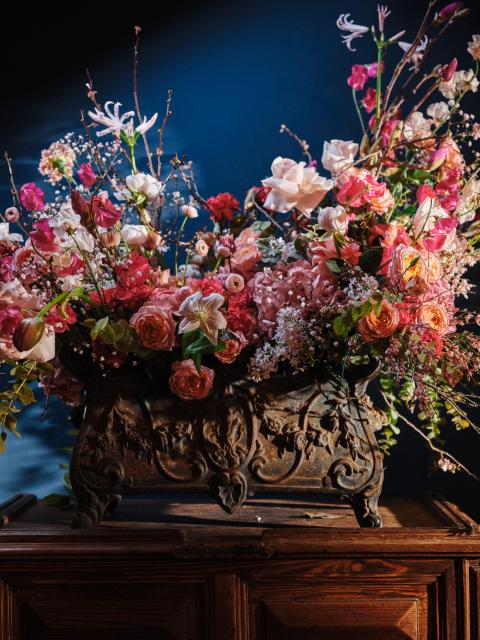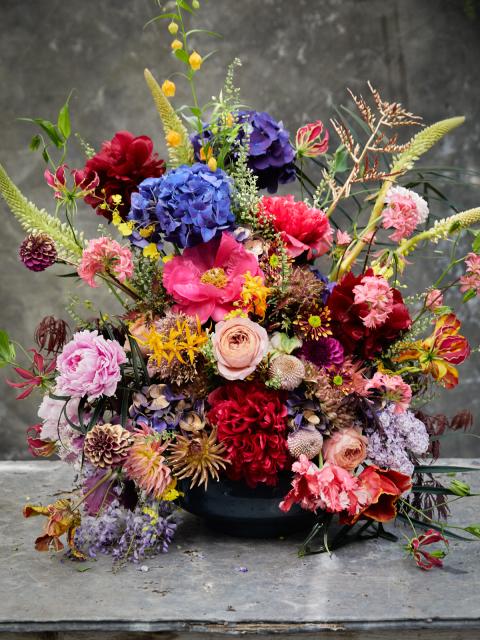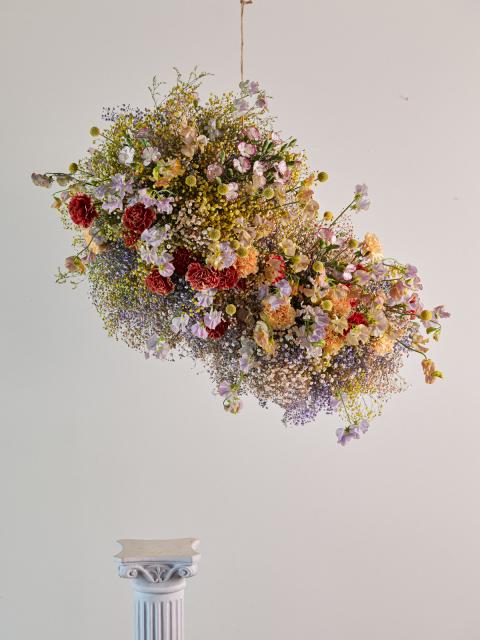Who is Rachel Ruysch and why are her paintings important?
Rachel Ruysch was a prominent Dutch painter of the late 17th and early 18th centuries. She lived from 1664-1750 and is known for her breathtaking floral still lifes with colourful flowers on a grey or black background. She captured every flower, leaf and insect with the utmost precision. Even if you don't know her name, you'll almost certainly recognise her work from posters, greetings cards and popular culture.
Examining Rachel Ruysch's artworks
Dutch still life paintings are a classic source of inspiration, and it's a good idea to familiarise yourself with their style and signatures before getting stuck in on creating your own floral installation inspired by the form. Ruysch gives each flower enough space to show its beauty and her technique has an organic, natural feel. One side of her painted flower arrangements are often higher than the other; you can see insects; and small-budded flowers and combined with wide-open specimens.
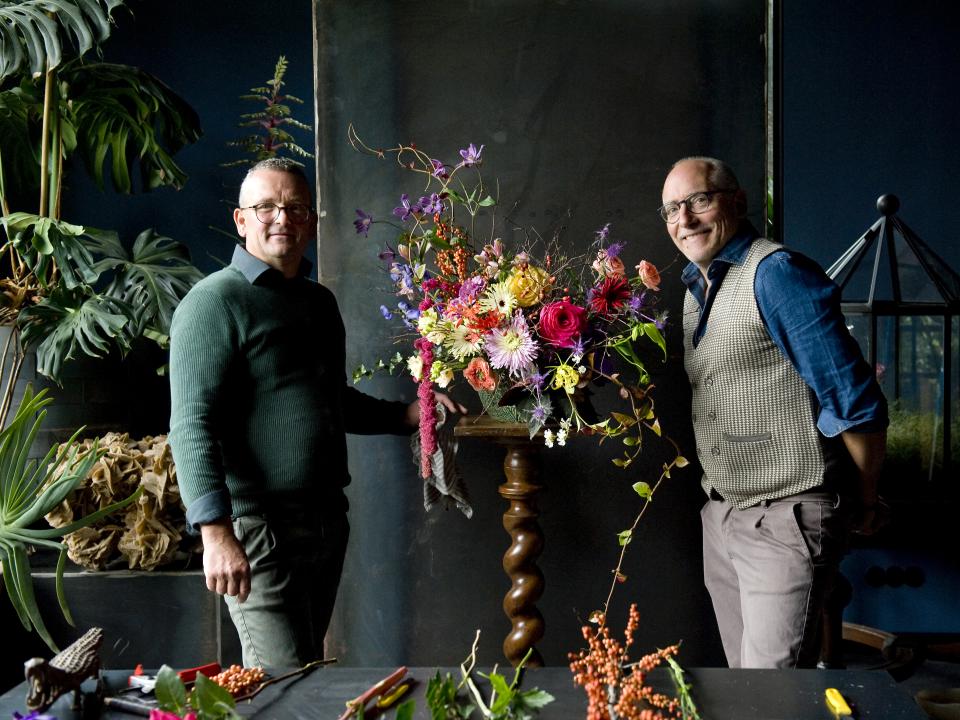
How to create a floral arrangement à la Rachel Ruysch
Florian and Ueli, floral stylists at The Wunderkammer, share Rachel Ruysch's passion for flowers and animals. Inspired by her work, they created a floral arrangement, and here they explain their process step-by-step to inspire you to make your own creation.
Rachel Ruysch-inspired flower arrangement requirements
- Most important is having a suitable vase. Make sure the vase is relatively low and wide, so that you have plenty of space to work and not overcrowd the flowers.
- Thin twigs (for the base of the flower arrangement), such as birch.
- Some larger flowers such as Peonies, Dahlias, Chrysanthemums and Lilies. Choose at least one white or very light coloured flower.
- Smaller seasonal flowers. In spring, think Ranunculus, Tulips, flowering quince or cherries. In summer, choose Zinnias, Campanulas, Grasses, Alchemillas and Delphiniums. Autumn lends itself to Asters, Hypericum, Nerines, Amaranthus and Aconitum (Monkshood). In winter, Helleborus, Euphorbia, bulb plants and flowering branches are suitable.
We used following flowers for the pictured floral arrangement:
- Birch twigs
- Large flowers: Rose, Chrysanthemum, Lily
- Large light-coloured flowers: Chrysanthemums in light pink and white
- Small flowers: Carnation, Cross Thistle, Monkshood, Lisianthus, Nerine, Flame lily, Alstroemeria, Orchid
- Other leaves/branches/fruits: Ilex orange, Ivy, Cucumis (fruit), Rosehip, Clematis
Step-by-step plan for a Rachel Ruysch-inspired flower arrangement
Got the supplies you need? Follow the step-by-step plan below to create your own masterpiece.
Step 1
Find a suitable vase with a wide mouth to house your the flower arrangement.
Step 2
Start with a natural-looking base of small twigs and branches. Cut them at equal height (choose a height to your liking) and place them together in the vase so that they fill the space nicely. Fill the vase with a layer of water.
Step 3
Like Ruysch, continue your composition with a few large, round flowers in the middle. Cut the flower stems at an angle and distribute them between the twigs. By ‘pushing’ them between the branches, they'll find a secure foothold and stay in place.
Tip: Ruysch often highlighted one or two light or white large flower(s) among colourful specimens on a dark background. Don't forget to add a white or light-coloured flower to your own masterpiece!
Step 4
Place a number of smaller flowers in a playful, organic way around the larger flowers. Cut the flower stems at an angle (making sure they're long enough) and add them in, working from the centre of the flower arrangement to further out. The contours of the flower arrangement will start to become apparent.
Tip: attempt an organic, natural shape and make one side of the flower arrangement higher than the other, as Ruysch did.
Step 5
Insert any remaining small flowers crosswise into the masterpiece and gently rearrange your flower arrangement until you are happy with the result. Make sure the flower arrangement feels sturdy and secure in the vase.
Step 6 (optional)
Add a small branch of Ivy, Clematis or Periwinkle here and there to create more ‘movement’ in your floral arrangement.
Step 7
Place your floral arrangement in front of a dark background, such as a dark-painted wall or poster. To complete the still life picture, consider adding some fruit, pine cones, shells or fake insects. Voilà, your masterpiece is ready!
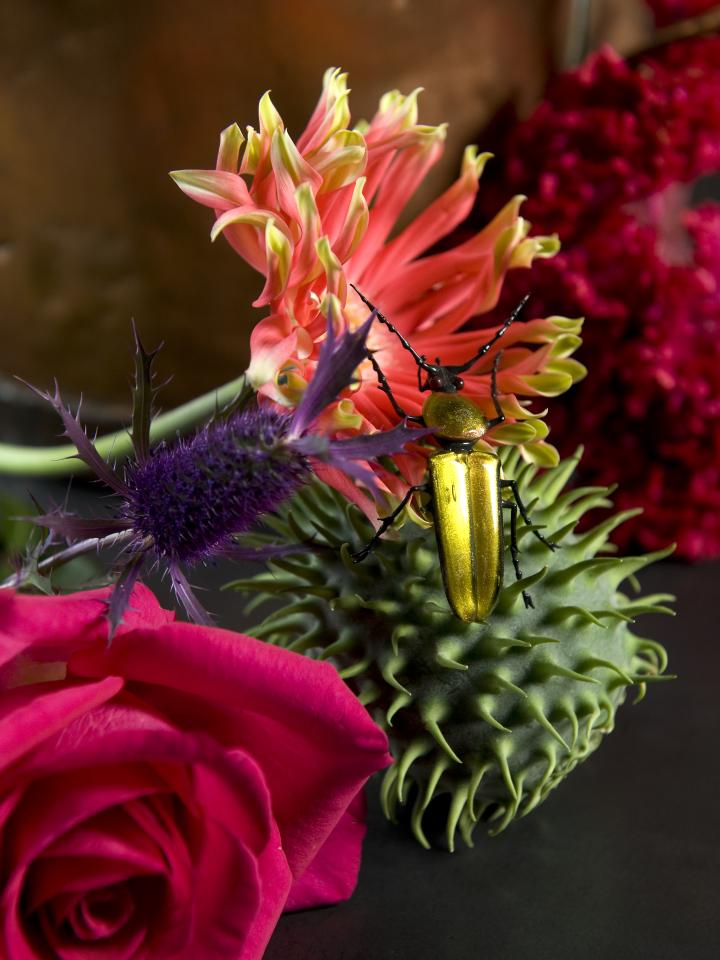
More DIYs from famous floral stylists
If you're fired up about creating your own floral masterpiece, let us inspire you with the floral signatures of other well-known floral stylists. Yoko Negi explains how to make a flower cloud with dried flowers, Valentina Teinitzer demonstrates her high-up floral arrangements and A.P Bloem explains how to make a flower still life.


